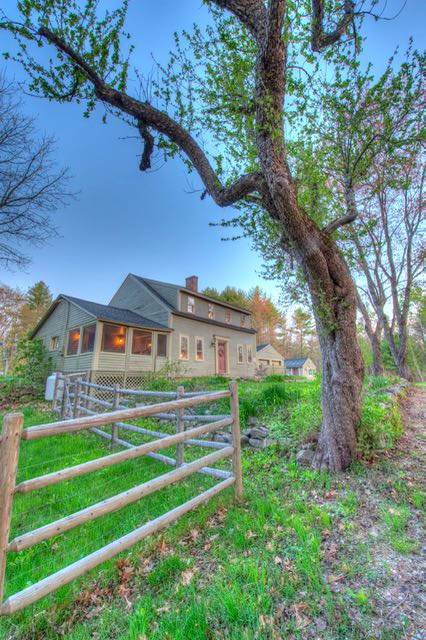
Blackwater Bluff Farm and Pottery, New Hampshire
“Tenemos” is a Greek word originally referring to the cultivated land that wrapped around the temple – a set-aside bit of holy garden one had to cross to enter the temple. Tenemos was like the moat that wraps around a castle. Our senses, touch, sight, and hearing are that same tenemos – that same temple-garden, which is the gateway from physical life to the spiritual world within and around us.
One day I was walking near the pond of my New Hampshire retreat, Blackwater Bluff, and there was a heavy mist on the ground clinging close to the tall grasses and bright yellow wild orchids. The mist was only a few feet high. I sat down so as to be engulfed in the mist – it was like entering a moist, foggy world where vision was nearly impossible but very beautiful and mysterious. Then I stood up and my head pushed back up into the clarity above the mist and I could see shapes and colors and beauty again at a long distance. It was at that moment that I began to understand the spiritual life not as something we attain way out in front of us like some reward for self-discipline or heavenly peace; or the finish line of a race. Rather, I began to understand what the early Christian Celtic mystics were saying about the spiritual life and the physical life being parallel – one atop the other and each within reach.
The Celtic priests referred to heaven as being a foot above one’s reach. Our Roman Christian heritage has trained us that, like the altar in a great cathedral, the HOLY is way up there, way beyond the floor where we are allowed to sit, way up those great steps, up past that rude screen, past the choir stalls, past the altar rail designed as a barrier and way up around the “high altar” where only male priests may roam. Men in cassocks have been lying to us for centuries. The holy is not way out in front of us, past a lifetime of self-discipline. The holy is here, where we are, close around us and within us.
Our homes and our physical senses are our “tenemos,” the grounds around the temple of our inner life. They are not so much a barrier to the Holy as they are a laboratory for the holy – a place in which to explore what we long for – the good and the unhelpful. Whether we take the time to wander the gardens of our inner life is another question entirely.
Most of us spend our time being entertained by the noise of our society so as not to have to face the demons within us. Yet the moment we face our demons, befriending them and sequestering them with the welcome of God, they lose their power: light overcomes the darkness. All too often, rather than explore the holy garden of our tenemos, we hang out in the parking lot with cars and smog and noise on hot asphalt.
Liturgically, Eatser is tenemos – the grounds through which we wander past the cross and the grave to the empty tomb and then to conversion – the work of sorting things out in God. To miss Easter’s work is to not bother wandering the resurrection garden.
Each of us has a life to live and most of us a home in which to live that life. Our work as Christians is to make time in our home, not just sleep there, exhausted from the work it takes to pay the bills. Perhaps a smaller house, and time to enjoy it is an improvement on our luxurious homes and the demands they place on our lives to pay the bills. Our Easter calling is to be alert to the Holy which is swirling around and through us. This is no time to go back to busy-ness as usual.
Our work is to arrange our home and our life so that we do not miss what God is doing and saying in our lives. Blackwater Bluff is, I admit blissful with its overstuffed chairs, cozy woodstoves, woodland strolling paths, and old friendships.
It’s possible, too, to set God in a corner of my life – Sunday mornings— where God is seen more as a good-luck charm or emblem of respectability than the central reality of my life.
There’s a story of an ancient holy man who is asked by a disciple, “What can I do to connect to the Holy?” His master said, “You can do as little to connect to the holy as you can to make the sun rise in the morning.” The man was saddened by this answer, despairing at all he was doing to advance the church. He turned to his master and said, “Then why do I do all that I do?” to which his master said, “So that you are awake when the sun does rise.”
Our lives and our Easter experience are our tenemos – the grounds around the temple of the Holy. And the Holy is not way out there – towards which we strive. The Holy is here, within which we must live -awaken, listen and feel.

